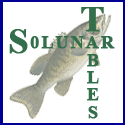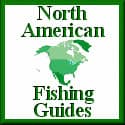Bass on Hook is Supported by our readers. As an Amazon Associate We earn commissions from qualifying purchases. For more informtion read our Amazon Affiliate Disclosure and Affiliate Disclosure Policies.
Saltwater Flyfishing for Bluefish A First Time Experience
By Peter Kane
Names like Willowemoc, Beaverkill, Chichester and Rondout all bring to mind those early summer evenings when flies are hatching and every cast of a Light Hendrickson brings a rise to the surface.
Red wing blackbirds singing in the background and the babbling of water over protruding rocks all set the stage for one of my typical trout fishing ventures.
I am fortunate enough to live near all of these streams and getting out for a few hours is not difficult to do.
On the other hand when it comes time to run a charter on Long Island Sound it requires a two hour ride to Clinton, Connecticut and at least an hour of preparation in anticipation of meeting my customers.
I enjoy both events immensely, they just differ in most aspects of fishing.
Until this past September when my customer came on board with his fly rod and assorted flies.
Saltwater Flyfishing For Blues Can You Imagine
Most of my charters on the Sound focus on fishing for Bluefish (blues).
September is one of the better times to catch them up on the surface in the typical feeding frenzy they are famous for and it is also a time of the year when they tend to run larger.
Techniques will vary depending upon the customer and their knowledge of fishing.
For the neophyte, I may troll umbrellas on thirty pound monofilament fishing line.
When a hook-up occurs it is not uncommon to get doubles or even triples and they love it!
The fury and excitement of someone Blue Fishing for the first time is the antithesis of wading the Beaverkill on that summer evening.
With a more experienced angler on board I often break out the light spinning tackle and toss surface plugs into the melee of chomping and splashing.
This requires the ability to cast and work the fish a bit more as the line on the spinning reels is much lighter - you can't "crank them in" the way you could with the heavier gear.
But I had never considered fly casting for them.
Most likely because it requires a fair degree of skill to work a fish on a fly rod and I could just see my investment in fly fishing tackle taking a trip to the briny deep or being broken by an inexperienced fisherman.
On this particular Saturday morning last September we approached one of my favorite areas known as the "horseshoe" or west rip about six mile out in the Sound.
On an incoming this area produces a horseshoe shaped rip about a half mile in length and it is rare that you do not have fish feeding there, both Stripers and Bluefish.
This day was typical as numerous birds were working the surface in two or three different areas.
There was a moderate west wind resulting in a chop of two feet or so with waves in the rip running three to four.
Initially we trolled through the rip from west to east and as we passed through it I would stem the current so our lures would stay put with their action being produced by the water rushing over the ridge below.
Hook ups were constant and within an hour or so we had caught and released up to two dozen Bluefish all of considerable size.
Saltwater Flyfishing For Bluefish Time To Put It To The Test
It was time to try the fly rod.
The technique was basically the same as far as the boat and I were concerned.
I would stem the current just "upstream" of the rip and my customer would cast into the waters before the rip and let the fly work back into it.
He was using a large bright blue streamer and it attracted fish on every cast.
That was the easy part.
Fighting an eight to ten pound Bluefish on a fly rod took considerable skill and time.
On occasion I would let the boat drift back into the rougher water by backing off on the throttles and then move forward again while the fly was cast and worked almost the same way you would work a parachute jig on wire.
In this case however, you do not use the rod.
Instead you work the line in your free hand and raise the rod to set the hook.
Now, I do not often do this but the fellow I had on board was an experienced boater and when he suggested that I try it I was more than happy to let him take the helm.
I lost fish on the first two casts but finally got the idea.
You really have to let the fish do what he wants and then take advantage when he moves towards you or is tired enough to allow you to take line.
Much like fishing with any other type of rod except much more intense and requiring more skill.
When fishing for Bluefish it is also very important to use a leader that will tolerate their teeth!
We used a flexible black wire and a tiny crimp when joining it to the fly and snap swivel.
The rod and reel were designed for saltwater use and I honestly do not remember the make or size.
To Sum It Up
The experience impressed me so much that last evening I started perusing the catalogs for saltwater fly fishing equipment with the intent to purchase two setups with some assorted flies and surface poppers.
Advertising fly fishing as one of my methods of catching fish can only add to the repertoire of the business and who knows, perhaps with a more practice I can even offer instruction as well!
Tight Lines!
Peter Kane
Check out the Osprey Marine website at Osprey Marine Ltd. to find out more about Peter Kane and Osprey Marine Ltd. and the services they provide.
Look for other articles written by Peter Kane in Peter's Pro Staff Angler Profile










